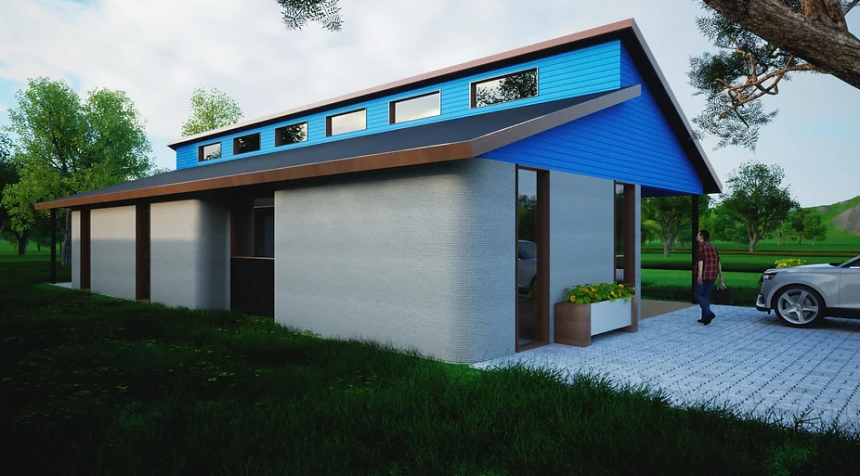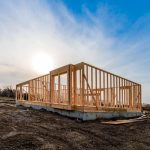Aussie developers are pushing the frontier of construction technology with the unveiling of the country’s first-ever 3D-printed two-storey home.
Renowned print construction company Luyten 3D has once again impressed home builders and buyers alike by using its cutting-edge mobile 3D printing system to erect a fully functioning home in only 32 hours.
Printed all in one go at the company’s headquarters in Melbourne, founder and CEO Ahmed Mahil said the two-storey granny flat was designed to give Aussies access to an “instant yet stylish” small format living space.
“We are extremely proud to become the first-ever 3D printing company in the building and construction sector to deliver on such a monumental achievement,” added Mahil.
Eleven metres wide, six metres high, and kitted out with two bedrooms, a kitchen, bathroom and a living area, Luyten claims the quick-setting concrete structure provides everything Aussies need in a small home – and all built by only two staff over two and a half day shifts.
“The product is fast drying, highly durable and capable of withstanding significant weather events, making it ideal for remote living conditions as well,” said Mahil.
All this is made possible thanks to the company’s Platypus X12 printer, which they claim to be the largest mobile AI-powered 3D printer in the world, and its ability to transform from its relatively compact size to six metres in height and 12 metres in length.
Unlike other models seen in similar builds in the Northern Hemisphere, the “revolutionary” system uses a self-propelled crane which enables it to adjust and move with ease into difficult-to-access spaces and across large sites to print 3D structures, forgoing the need to print in separate stages.
“To date, building a double storey structure using 3D printing has been problematic as some firms in the northern hemisphere have only been able to do this by using fixed gantries which are notoriously expensive to operate and dismantle,” said Mahil.
“Through our telescopically transformative Platypus X12 printer, we have made it possible for this printing to happen seamlessly in one printing session without the need for the involvement of any other heavy machinery.”
This Platypus also previously turned heads late last year when the company debuted the printer’s first single-storey foray into 3D home builds.
Can 3D printing solve the housing crisis?
For an industry hounded by labour shortages and wage hikes over the last few years, Mahil said the company’s latest build is a prime example of how 3D printing tech can help tackle construction’s biggest challenges.
“We have demonstrated that using our cutting-edge technology that anything is possible. 3D printing can help to ease the building crisis sweeping the country and the industry needs to embrace 3D printing to galvanise the industry’s long-term future,” he said.
According to Master Builders Australia, the residential construction sector will need to conjure up 90,000 more tradies in the next five years if the government is to have any hope of hitting Albanese’s 1.2 million home building target.
However, with that ambitious goal seeming more unrealistic by the day, Mahir says there’s room for 3D printing technology to fill in the gaps.
“Traditional building methods are proving too costly for an industry that has operated on fixed cost contracts and archaic building practices,” he said.
“On top of this labour is becoming scarcer and building materials are also proving difficult to source and this is driving up the cost of doing business.
“3D printing significantly reduces build time and cuts costs for the creation of the structural framework. Rather than laying bricks and building walls, 3D printing simply prints the structure so that trades can then install the final elements.
“The printing process is easy, low risk and highly productive. 3D printing isn’t just for basic structures. As we have shown, 3D printing is capable of delivering a broad range of properties for a range of different and challenging locations.”







